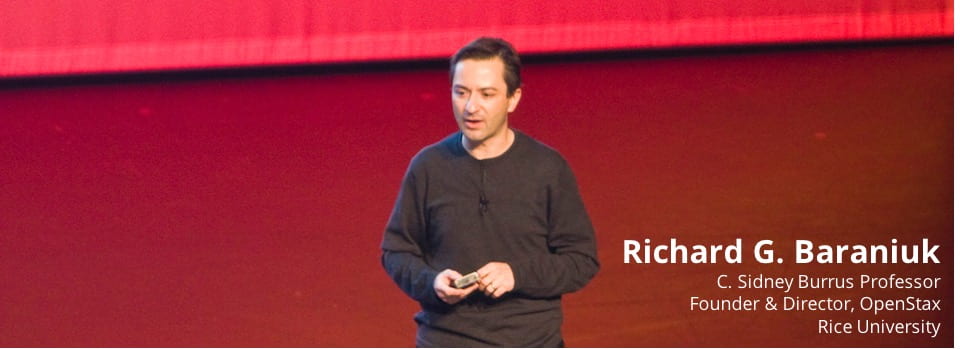 More than 1.5 million college students have used a free textbook from OpenStax, the Rice University-publisher announced today. The number of students using OpenStax textbooks in college and high school courses has more than doubled since January 2016, and OpenStax estimates it will save students $70 million in the 2016-17 academic year.
More than 1.5 million college students have used a free textbook from OpenStax, the Rice University-publisher announced today. The number of students using OpenStax textbooks in college and high school courses has more than doubled since January 2016, and OpenStax estimates it will save students $70 million in the 2016-17 academic year.
"More than 811,000 students are using our books this fall, which is a 106% increase over spring 2016. Our books are being used in over 4,500 courses at 2,688 universities, colleges and high schools. This is 27% of all US degree-granting institutions," said Richard Baraniuk, founder and director of OpenStax and Rice's Victor E. Cameron Professor of Engineering. "Our books are making it possible for more students to afford college at a time when a college education has never been more important."
Based on the number of instructors who have notified OpenStax that they are adopting the books in their courses, OpenStax knows that 1.5 million students have used its books since 2012. Based on the date of adoptions, the one millionth student is among the students in instructor Shawna Brandle's American Government course this fall at Kingsborough Community College in Brooklyn, N.Y.
"I'm so happy to be using the OpenStax American Government textbook," said Brandle, an assistant professor of political science at Kingsborough. "I taught for years using expensive textbooks I didn't like before trying a different free digital book that wasn't great. I even tried making my own book, but nothing at any price is as good as the OpenStax book. I'm doubly happy knowing that my students are not paying for a book and are still getting the best resource available, regardless of price."
OpenStax launched in 2012 with two titles and a unique OER business model: Use philanthropic grants to produce high-quality, peer-reviewed textbooks that are free online and low-cost in print.
Current titles include College Physics; Biology; Concepts of Biology; Anatomy and Physiology; Chemistry; University Physics, volume 1; Microbiology; Sociology 2e; Principles of Economics; Principles of Macroeconomics; Principles of Microeconomics; Psychology; American Government; U.S. History; Introductory Statistics; Precalculus; Calculus, volumes 1-3; Algebra and Trigonometry; College Algebra; and Prealgebra.
